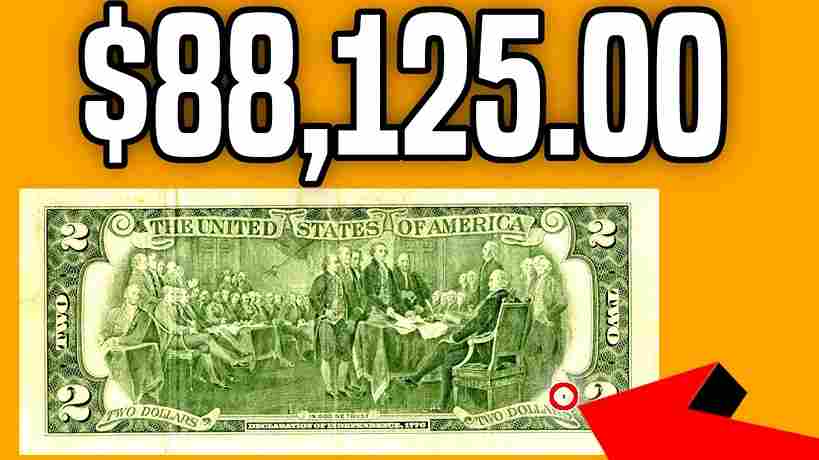Rare $2 Bill $2 million surprise at petrol pump A customer at a petrol pump not only found change, but he also accidentally found a rare $2 note worth $23.49 lakh. The note, given to him by the cashier as an everyday note, turned out to be a historical gem—one of the rarest $2 notes ever.
The $2 Bill That Changed Everything Rare $2 Bill
At first glance, the bill looked like any other standard $2 note bearing Thomas Jefferson’s portrait. However, after closer inspection and professional authentication, it was confirmed to be a 1928B Red Seal $2 bill, with several extremely rare characteristics:
-
A low serial number
-
A printing error
-
Near-uncirculated condition
All these details combined made the bill one of the most valuable $2 notes ever discovered.
Why was this $2 note worth $2.349 million?
A combination of rarity, condition, and historical significance made this note so valuable:
Series year: 1928B
The 1928B series is already rare, and even fewer examples of it survive in good condition. This note was nearly flawless.
Printing error
Unusual stamp alignment and ink displacement made this note even more unique—erroneous notes are highly valued by currency collectors.
Low serial number
This note’s serial number began with a series of zeros—numbers like “00000001” or symmetrical patterns like “20000002” can multiply a note’s value by several times.
Historical era
Issued shortly before the Great Depression, these notes have historical significance to collectors.
🏛️ Sold to the Highest Bidder
After being authenticated by paper currency experts and certified by a high-level grading service, the note sold for $2.349 million at a private auction. The buyer was a well-known U.S. currency collector who wished to remain anonymous.
Are rare $2 notes still in circulation?
Surprisingly, yes. Although many rare notes are now part of museum collections or private vaults, plenty still sit undiscovered in drawers, wallets, or retail cash registers. Most cashiers—and the general public—can’t tell the difference between a standard $2 note and a collectible version.
That means you could end up with a fake note without even realizing it.
How to Spot a Rare or Valuable $2 Bill
Here’s what collectors look for when evaluating a $2 bill:
| Feature | Description |
|---|---|
| Red or Brown Seal | Found on notes issued before the 1960s—these are often worth more than green-seal notes |
| Star Note | Denoted by a star symbol ★ near the serial number—these are replacement notes printed in limited quantities |
| Series Year Before 1953 | The older the bill, the higher the potential value |
| Unusual Serial Numbers | Patterns like repeaters (12121212), palindromes (12344321), or very low numbers (00000007) |
| Mint or Uncirculated Condition | No folds, creases, or markings—perfect bills are far more valuable |
What to Do If You Find One
If you think you’ve found a valuable $2 bill, here’s what you should do immediately:
-
Don’t spend it!
-
Store it in a currency sleeve or a protective case to avoid damage.
-
Research the series year and serial number.
-
Consult a grading service like PMG (Paper Money Guaranty) or PCGS Currency.
-
Get a second opinion from a reputable currency dealer or numismatist.
Final Thoughts
This story is a reminder that modern-day treasure isn’t always buried underground—it might be sitting in your pocket, forgotten in a drawer, or handed to you at the corner gas station. The next time you receive a $2 bill in change, don’t just tuck it away without a second thought.
That little piece of paper could be your ticket to a million-dollar surprise.
FAQ: Rare $2 Bill Found in Gas Station Change
Why was this $2 bill worth $2.349 million?
It was a 1928B Red Seal with a printing error, low serial number, and in near-perfect condition—extremely rare among collectors.
Can you still find valuable $2 bills in circulation?
Yes. Although uncommon, rare bills are still out there. Many people don’t recognize the differences between ordinary and collectible notes.
What features should I look for?
Look for:
-
Red or brown seals
-
Star symbols (★)
-
Serial numbers with patterns or many zeros
-
Notes issued before 1953
-
Clean, uncirculated bills
What should I do if I find one?
Do not spend it. Protect it, research it, and get it appraised by a currency expert.
